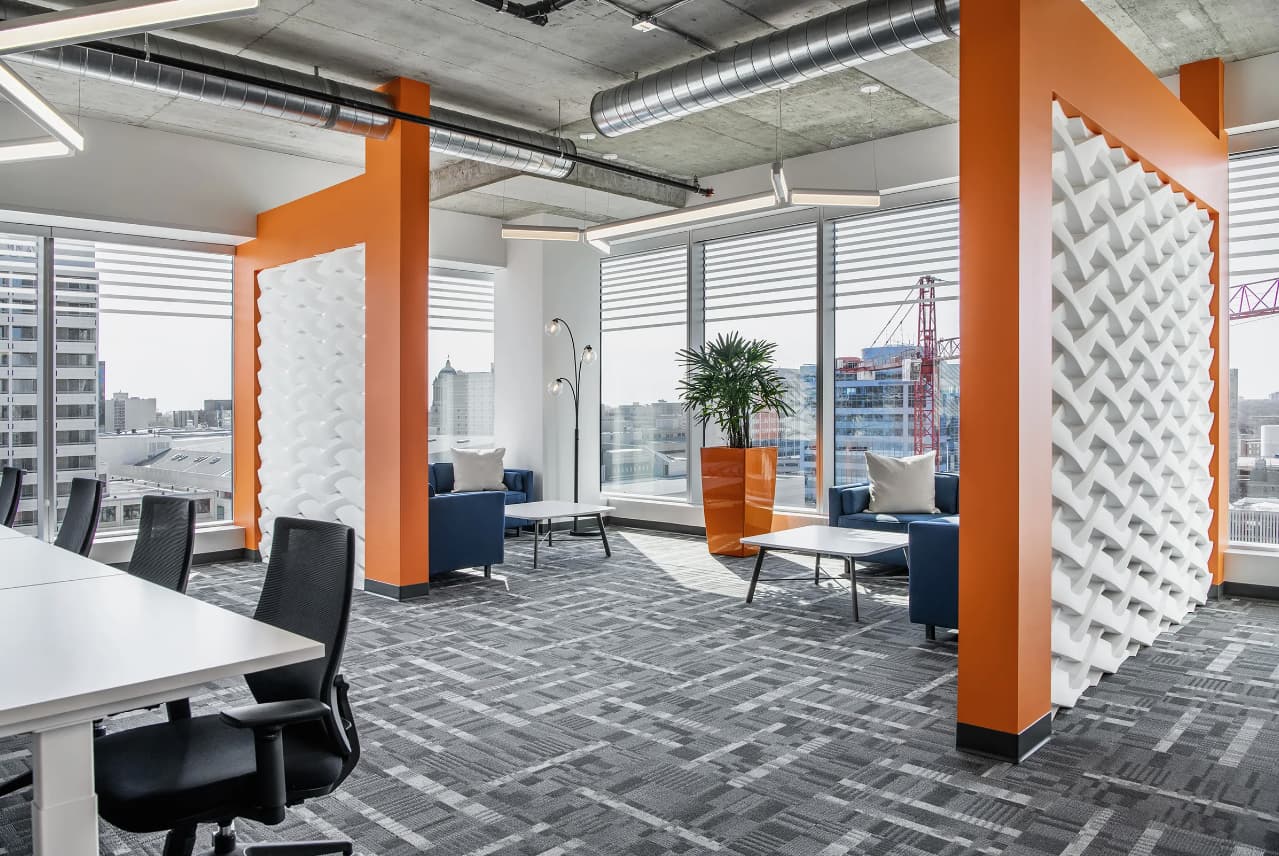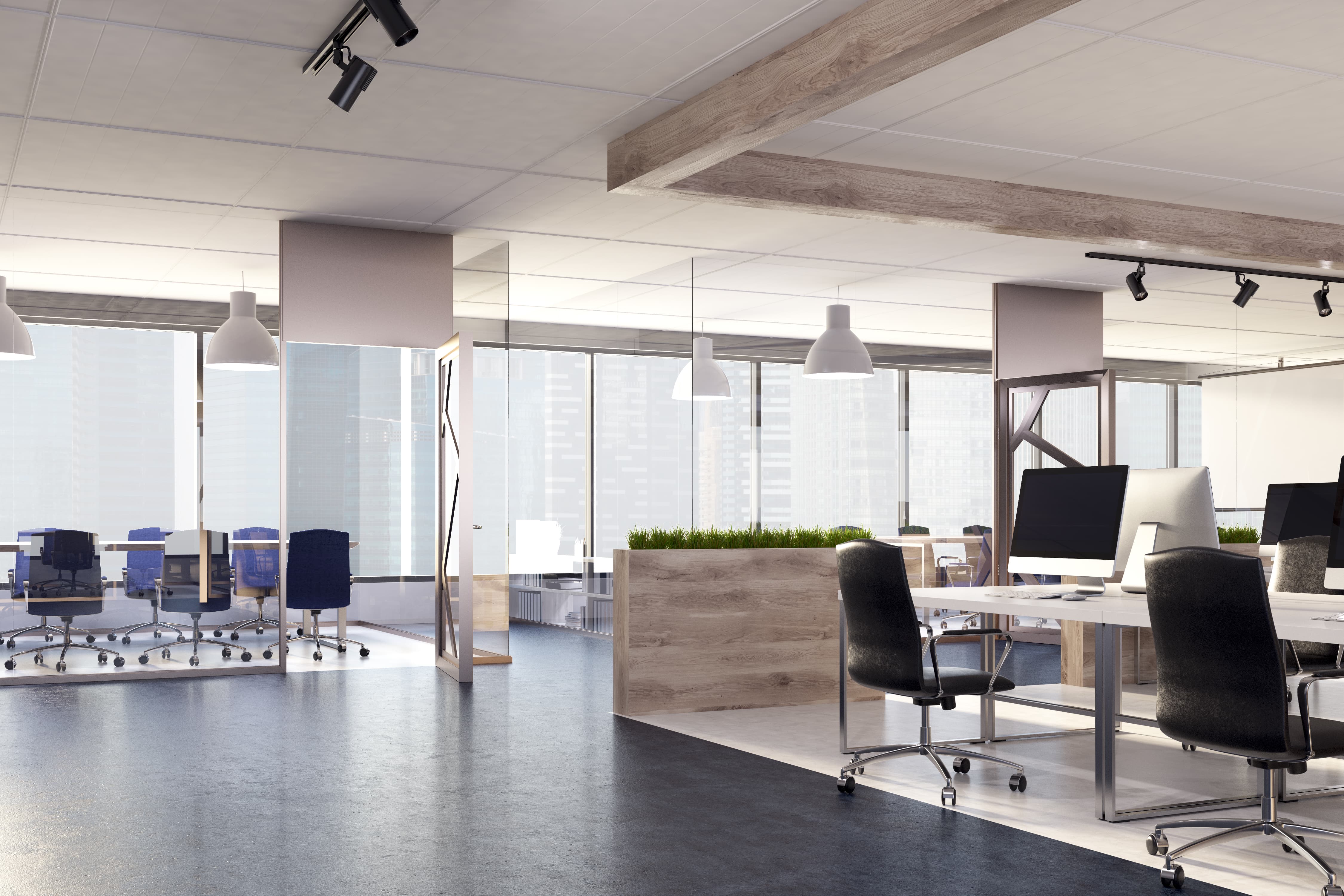It’s very rare to lease an office or facility that perfectly suits the needs of your business, and usually the space needs some customisation before you can get up and running.
These alterations are also known as leasehold improvements or commercial tenant improvements and are carried out when a commercial space needs to be changed to suit the specific needs of a business. Leasehold improvements can be expensive and time consuming so it’s important to try and minimise the work where possible.
In this blog post, we’ll look at what types of work count as lease improvements together with the potential advantages and disadvantages of leasehold improvements. We’ll also look at the steps you can take to reduce the cost of lease improvements.
What are lease improvements?
Lease improvements differ from building improvements in that the changes can only benefit the specific tenant who is requesting the work.
This can include structural modifications such as adding rooms and partitions or work on drywalls. New technology systems, electrical systems or changes to lighting are also covered by this term, as is installing bespoke display units, shelving and countertops. Even repainting the office walls or changing the flooring can be included in a leasehold improvement agreement.
The work could be undertaken for a new or existing tenant and can be carried out by either the landlord or the tenant, depending on the agreement you have.
What work doesn’t count as leasehold improvements?
Not all alterations qualify as lease improvements, and this includes any modifications made by one tenant that also benefit their neighbours.
Alterations to the structure of the building such as extensions, new elevators and escalators or work on the roof don’t count as leasehold improvements. Neither does the installation of security alarms, fire protection and HVAC systems that cover the whole building.
And because external renovations such as landscaping or parking lot repairs benefit the whole building, these can’t be included in a leasehold improvement agreement either.
It’s important to bear in mind that commercial tenant improvements are a one-off cost and non-refundable. This means that the cost of these alterations will cut into the budget that you have allocated for design and decoration, so it helps to try and find a commercial space that is as close as possible to your requirements.
What are the advantages of Leasehold Improvements
Every business has unique needs and when you move into a new commercial space, you may feel that you have to compromise on some of those needs. Perhaps you can accept that the lighting isn’t quite right or put up with the carpet that the previous tenants left behind.
Other needs can’t be compromised quite so easily. A restaurant has to have the right kitchen equipment and a legal firm needs to have private offices where clients can hold confidential discussions. Leasehold improvements allow you to customise your space to suit those needs, so that your business can operate successfully.
Hiring experienced tenant improvement contractors to create a well designed office space will also help to make your employees and your clients feel more comfortable, which can only be good for business.
But there can be downsides to lease improvements as well.
What are the disadvantages of Leasehold improvements?
Any alterations to your new commercial space will take time, which could delay your planned opening or cause interruption to your business operations.
And leasehold improvements can’t be taken with you at the end of your contract, unless you agree this with your landlord in advance. So if you’re planning to install bespoke display units in your offices and don’t want to leave them behind, they need to be removed without damaging the building and your request needs to be specified within your tenancy agreement.
It’s also very important to have your lease checked carefully by an experienced commercial lawyer, as not all alterations will be permitted under every lease.
Negotiating lease improvements
You should discuss your renovation requirements with the landlord before you sign a lease, to make sure that they’re on board with your plans. This will also allow you to check that the building can structurally support the changes that you need, especially if you’re installing heavy equipment.
The renovation plans are usually included as an addendum to the lease, and need to include any alterations you may need throughout the term of the tenancy. You may also wish to add a clause to your lease stating that any conflicts over future work will go to mediation before legal action.
In all cases, it’s a good idea to get your lease checked by a commercial lawyer who specialises in this type of work.

Who pays for lease improvements?
In most cases, the tenant will be responsible for paying for leasehold improvements and managing the work involved. However many landlords appreciate that tenant improvements can help to boost the value of commercial real estate and may be willing to help with the cost of renovations.
They may offer a leasehold improvement allowance to pay for some of the work. This Tenant Improvement Allowance is usually calculated as a rate per square foot of rented space.
Other landlords may prefer to offer tenant inducements such as a period of time at zero rent or at a discounted rate, which can help to offset some of the cost of renovations.
A further option is for the landlord to provide turnkey improvements, where the landlord offers the tenant an improvement package with a range of options for flooring, fixtures and fittings. This is also known as a build out allowance on a commercial lease, and the landlord will manage and pay for the work carried out.
How to reduce the costs of Leasehold Improvement
Leasehold improvements are often permanent and should be considered non-refundable. This cost will reduce the budget that you can assign to the rest of your design and decoration costs, and the time taken for lease improvements may impact on your business operations or delay your opening date.
So picking a space that was used for a similar purpose will help to reduce the amount of work, as many of the facilities you need may already be in place. New builds can require basic work such as plumbing and electrical wiring before you can start decorating, which will also increase your bill so you may prefer to avoid these.
It’s also important to hire experienced tenant improvement contractors to ensure a smooth rollout of your required renovations. Be sure to get a range of quotes and to check references before you engage your contractor.
How Truspace can help with your lease improvements
The more customisations that a space needs, the higher the final cost of the work will be. So working with a specialist commercial interior design consultancy like Truspace can help you to reduce the bill, by assessing the alterations needed before you sign your lease.
Truspace has over 30 years’ experience in this field which makes us the ideal partner for an independent perspective on your project. We’ll assess your requirements before you sign a lease to make sure that you don’t rent an unsuitable space. Our expert designers will consider not just your current requirements but also how future growth will change the needs of your business.
Once you’ve signed your lease, we will then create a stylish workspace design that meets all of those needs while also being efficient and comfortable to work in. You’ll receive a full project schedule, class D budget, test fit and look book of design inspiration.
Our experience allows us to find additional cost savings that you may not have noticed and we can also help you to avoid expensive errors and redesigns. This all means that your leasehold improvement costs will be kept to a minimum, leaving more of your budget for other aspects of decoration.
And when work starts on your lease improvements our project managers will ensure a smooth rollout of the alterations, keeping the impact on your business to a minimum with our no-hassle delivery promise.
For more information on how we can help with leasehold improvements for your business, call or email Truspace today.




